-
 Bitcoin
Bitcoin $115000
0.12% -
 Ethereum
Ethereum $3701
4.50% -
 XRP
XRP $3.081
2.99% -
 Tether USDt
Tether USDt $0.0000
-0.01% -
 BNB
BNB $767.9
1.45% -
 Solana
Solana $169.5
3.13% -
 USDC
USDC $0.9999
0.01% -
 Dogecoin
Dogecoin $0.2106
4.30% -
 TRON
TRON $0.3334
1.62% -
 Cardano
Cardano $0.7564
2.54% -
 Stellar
Stellar $0.4165
0.76% -
 Hyperliquid
Hyperliquid $38.75
0.25% -
 Sui
Sui $3.593
3.00% -
 Chainlink
Chainlink $17.08
3.59% -
 Bitcoin Cash
Bitcoin Cash $573.6
4.35% -
 Hedera
Hedera $0.2508
-0.84% -
 Avalanche
Avalanche $23.07
6.46% -
 Ethena USDe
Ethena USDe $1.001
-0.02% -
 Litecoin
Litecoin $120.8
8.17% -
 UNUS SED LEO
UNUS SED LEO $8.943
-0.32% -
 Toncoin
Toncoin $3.400
-5.60% -
 Shiba Inu
Shiba Inu $0.00001255
1.54% -
 Uniswap
Uniswap $9.908
6.32% -
 Polkadot
Polkadot $3.718
2.10% -
 Monero
Monero $303.0
-0.74% -
 Dai
Dai $0.9999
-0.02% -
 Bitget Token
Bitget Token $4.392
0.91% -
 Cronos
Cronos $0.1403
6.31% -
 Pepe
Pepe $0.00001076
1.13% -
 Aave
Aave $267.2
1.80%
Is USDC suitable for long-term holding
USDC's dollar peg offers short-term stability, but long-term holding involves risks like Circle's solvency and regulatory changes; diversification is crucial for any long-term investment strategy.
Mar 16, 2025 at 05:20 pm
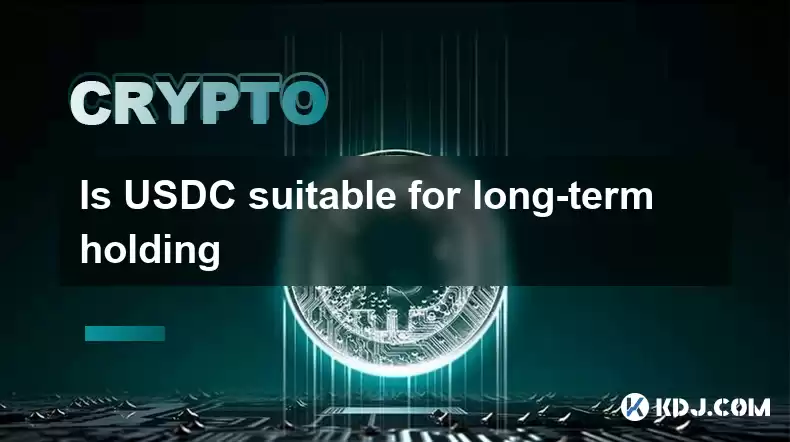
Key Points:
- USDC's stability is tied to the US dollar, making it less volatile than other cryptocurrencies. However, this stability is dependent on the issuer's solvency and regulatory environment.
- Long-term holding of USDC involves considerations beyond simple price appreciation, such as potential regulatory changes and the risks associated with centralized stablecoins.
- While USDC offers benefits for short-term stability and transactions, its suitability for long-term holding depends on individual risk tolerance and investment goals.
- Diversification within a broader investment portfolio is crucial, regardless of whether one holds USDC or other crypto assets.
Is USDC Suitable for Long-Term Holding?
The question of whether USDC is suitable for long-term holding is complex and depends heavily on individual investor circumstances and risk tolerance. Unlike volatile cryptocurrencies like Bitcoin or Ethereum, USDC is pegged to the US dollar, aiming for a 1:1 ratio. This inherent stability is its primary appeal. However, this stability is not guaranteed and relies on the financial health and regulatory compliance of Circle, the issuer.
The long-term viability of USDC hinges on several factors. First, Circle must maintain sufficient reserves to back all issued USDC tokens. Any concerns about their solvency could trigger a run on the stablecoin, potentially depegging it from the dollar. This risk is inherent to all centralized stablecoins. Furthermore, regulatory scrutiny of stablecoins is increasing globally. Changes in regulations could impact USDC's operations and its ability to maintain its peg.
While USDC's stability might seem attractive for long-term holding, it's crucial to understand that it's not an investment in the traditional sense. You're not expecting significant price appreciation. Instead, you're essentially holding a digital representation of the US dollar. The potential for returns is minimal, often limited to the interest earned through certain platforms offering USDC yield. This contrasts sharply with the potential (and risk) of significant gains or losses associated with other cryptocurrencies.
The interest earned on USDC, while seemingly appealing, carries its own set of risks. Yield-generating platforms are not always insured or regulated, exposing investors to counterparty risk. Furthermore, the interest rates offered can fluctuate, potentially reducing the overall returns. The long-term viability of these platforms is also a significant factor to consider.
Another important aspect to consider is the liquidity of USDC. While it's generally highly liquid, meaning it can be easily exchanged for other cryptocurrencies or fiat currencies, unforeseen circumstances could temporarily impact its liquidity. This risk, although usually low, is amplified over longer timeframes. Therefore, assessing the potential for liquidity issues is vital for long-term holders.
For those considering a long-term strategy involving USDC, diversification within a broader portfolio is critical. Relying solely on USDC for long-term growth is unlikely to yield significant returns. Instead, it should be viewed as a stable component within a more diversified portfolio that includes other assets, both within and outside the cryptocurrency market.
The question of long-term holding is further complicated by the potential for technological advancements in the stablecoin space. The emergence of decentralized stablecoins or alternative solutions could render centralized stablecoins like USDC less relevant over the long term. Staying informed about these developments is crucial for informed decision-making. The competitive landscape is dynamic and constantly evolving.
Common Questions and Answers:
Q: Is USDC insured like a bank account?
A: No, USDC is not FDIC-insured like bank deposits. It is a cryptocurrency and is subject to different risks.
Q: What happens if Circle goes bankrupt?
A: If Circle were to become insolvent, the value of USDC could be significantly impacted, potentially leading to a depegging from the US dollar. This would likely result in substantial losses for holders.
Q: Can I lose money holding USDC?
A: While the goal is a 1:1 peg with the USD, there's a risk of depegging due to various factors, including regulatory changes or insolvency of the issuer. This could result in a loss of value. Furthermore, any platform offering yield on USDC carries additional risks.
Q: What are the alternatives to USDC for long-term holding?
A: Alternatives depend on your risk tolerance and goals. Other stablecoins exist, but they share similar risks. Traditional assets like bonds or government securities offer different risk profiles.
Q: Is USDC a good option for short-term needs?
A: Yes, USDC's stability makes it suitable for short-term transactions and holding periods where price volatility is a major concern.
Q: How does USDC compare to other stablecoins?
A: USDC is one of the largest stablecoins, offering relatively high liquidity. However, all stablecoins carry risks associated with their backing mechanisms and regulatory environment. Comparing them requires careful consideration of each one's specifics.
Disclaimer:info@kdj.com
The information provided is not trading advice. kdj.com does not assume any responsibility for any investments made based on the information provided in this article. Cryptocurrencies are highly volatile and it is highly recommended that you invest with caution after thorough research!
If you believe that the content used on this website infringes your copyright, please contact us immediately (info@kdj.com) and we will delete it promptly.
- Velo Universe, DEX, and DeFi Security: Navigating the Future of Decentralized Trading
- 2025-08-05 09:25:13
- Bitget Wallet Revolutionizes Solana with Gas-Free Transactions: A New Era for DeFi
- 2025-08-05 09:25:13
- Ozak AI, Crypto Boom, and ROI Potential: Is This the Next Big Thing?
- 2025-08-05 09:25:24
- Solana's ETF Hopes & the All-Time High Chase: Is SOL Set to Soar?
- 2025-08-05 09:25:24
- Coinbase's Brian Armstrong and the Art of Focused Work: A Deep Dive
- 2025-08-05 09:25:30
- Uniswap Price Prediction: Bullish Reversal on the Horizon?
- 2025-08-05 09:25:30
Related knowledge
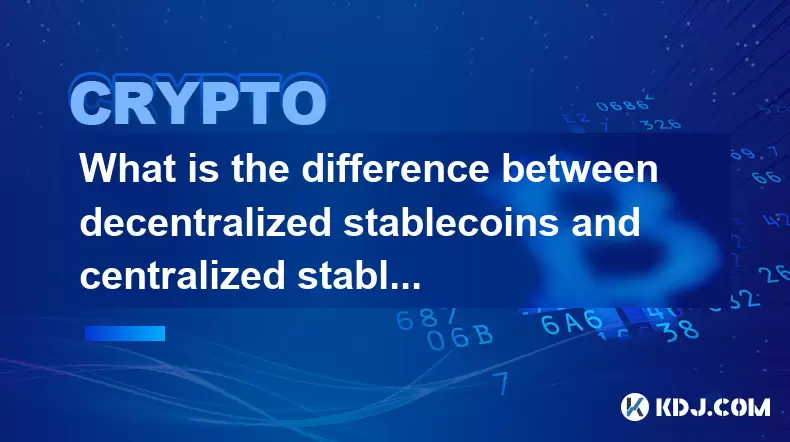
What is the difference between decentralized stablecoins and centralized stablecoins? Pros and cons comparison
Jun 15,2025 at 09:42am
What Are Stablecoins and Why Do They Matter?Stablecoins are a category of cryptocurrencies designed to maintain a stable value, usually pegged to an e...
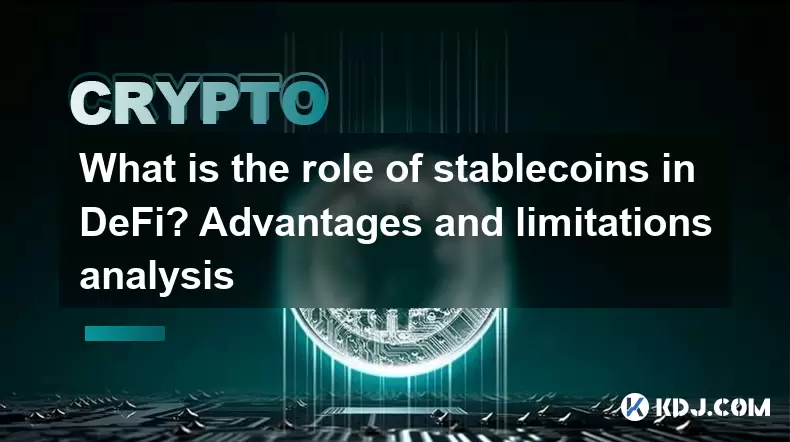
What is the role of stablecoins in DeFi? Advantages and limitations analysis
Jun 14,2025 at 06:28am
Understanding Stablecoins in the DeFi EcosystemStablecoins play a pivotal role in the decentralized finance (DeFi) landscape by providing a bridge bet...

How do algorithmic stablecoins work? Potential risks and market impact
Jun 12,2025 at 02:07pm
Understanding Algorithmic StablecoinsAlgorithmic stablecoins are a type of cryptocurrency designed to maintain a stable value relative to a specific a...
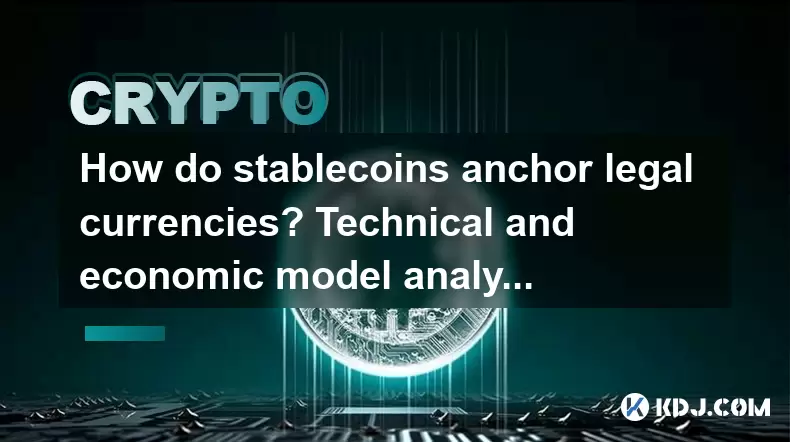
How do stablecoins anchor legal currencies? Technical and economic model analysis
Jun 16,2025 at 08:43am
Understanding the Concept of StablecoinsStablecoins are a category of cryptocurrencies designed to maintain a stable value relative to a specific asse...
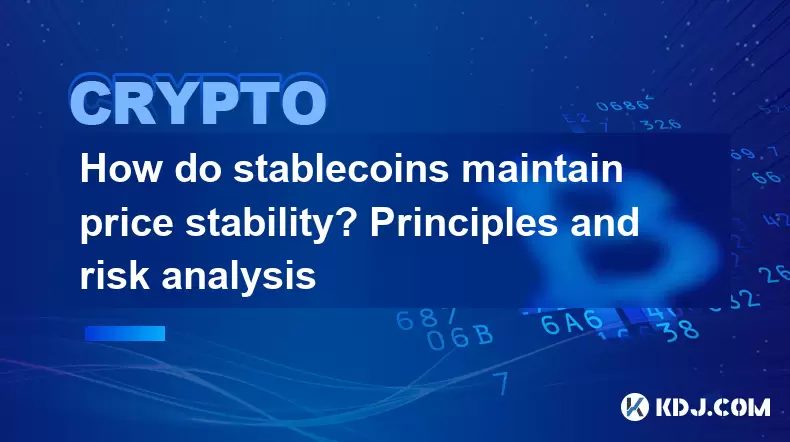
How do stablecoins maintain price stability? Principles and risk analysis
Jun 11,2025 at 12:01am
Understanding the Mechanisms Behind Stablecoin StabilityStablecoins are a category of cryptocurrencies designed to minimize price volatility, often pe...
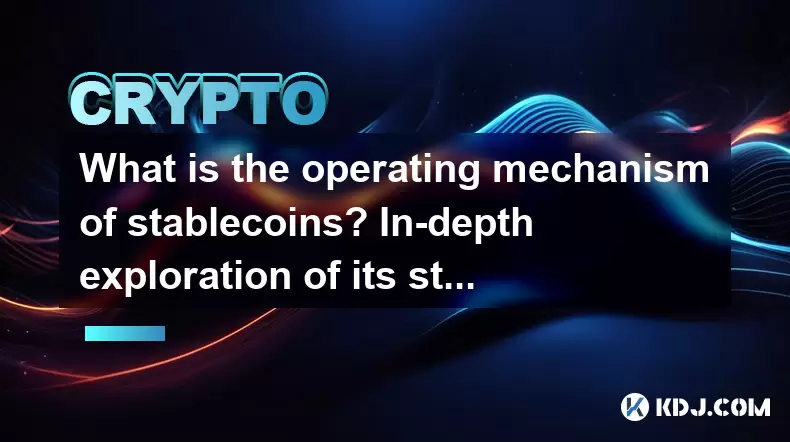
What is the operating mechanism of stablecoins? In-depth exploration of its stability principle
Jun 10,2025 at 09:28pm
Understanding the Core Concept of StablecoinsStablecoins are a unique category within the cryptocurrency market, designed to address one of the most s...

What is the difference between decentralized stablecoins and centralized stablecoins? Pros and cons comparison
Jun 15,2025 at 09:42am
What Are Stablecoins and Why Do They Matter?Stablecoins are a category of cryptocurrencies designed to maintain a stable value, usually pegged to an e...

What is the role of stablecoins in DeFi? Advantages and limitations analysis
Jun 14,2025 at 06:28am
Understanding Stablecoins in the DeFi EcosystemStablecoins play a pivotal role in the decentralized finance (DeFi) landscape by providing a bridge bet...

How do algorithmic stablecoins work? Potential risks and market impact
Jun 12,2025 at 02:07pm
Understanding Algorithmic StablecoinsAlgorithmic stablecoins are a type of cryptocurrency designed to maintain a stable value relative to a specific a...

How do stablecoins anchor legal currencies? Technical and economic model analysis
Jun 16,2025 at 08:43am
Understanding the Concept of StablecoinsStablecoins are a category of cryptocurrencies designed to maintain a stable value relative to a specific asse...

How do stablecoins maintain price stability? Principles and risk analysis
Jun 11,2025 at 12:01am
Understanding the Mechanisms Behind Stablecoin StabilityStablecoins are a category of cryptocurrencies designed to minimize price volatility, often pe...

What is the operating mechanism of stablecoins? In-depth exploration of its stability principle
Jun 10,2025 at 09:28pm
Understanding the Core Concept of StablecoinsStablecoins are a unique category within the cryptocurrency market, designed to address one of the most s...
See all articles

























































































